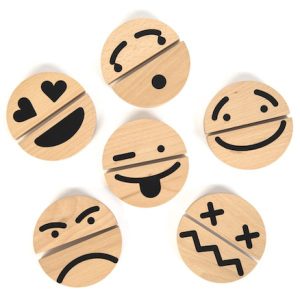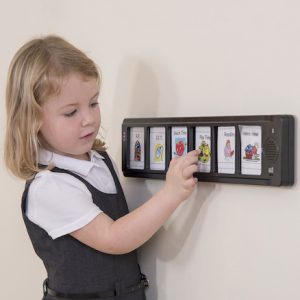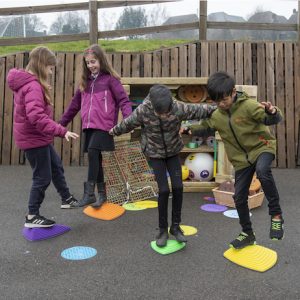This blog introduces the 5 main areas to consider when creating a mentally healthy classroom. Below are short extracts from the complete articles – be sure to keep an eye out on the TTS Blog for the complete articles full of top tips and strategies.
Everybody knows how to look after their physical health, but looking after our mental health is just as important. As educators, protecting our own mental health and creating a mentally healthy culture for our children is paramount to ensuring everyone can thrive. As we can’t always see our mental health in the way we can our physical health, talking about it with our children is imperative, encouraging them to identify their feelings, normalising expressing our emotions and recognising how our bodies and minds are feeling so they can be empowered to take control of their own mental health needs is essential.

What is a mentally healthy classroom?
A mentally healthy classroom enables all pupils and staff to be empowered to acknowledge how they’re feeling and adapt the environment to support their needs, ensuring they are mentally healthy and in the best possible state to be ready to learn.
By creating a mentally healthy classroom we are ensuring all children have the opportunity to thrive and not just survive.
How do we create a mentally healthy classroom?
When creating a mentally healthy classroom we can consider 5 main areas:
- Getting to know the child
- Supporting the child
- Creating an effective environment
- Physical Activity
- Supporting the staff
Getting to know the child
One of my favourite strategies for getting to know the children is ‘holding them in mind’. You will know those children that need to feel seen, that need boosts to their self-esteem, that need to know you genuinely care. With this strategy you make a point of pointing out things that have happened, or you saw that reminded you of them. For example “I went to home bargains at the weekend with my little boy and we saw the spiderman toys, it made me think of you because I know how much you love them!” Or “I saw a Labrador on my walk last night, don’t you have a Labrador? It made me think of you.” A simple sentence, but it really helps build that relationship and get to know the child, you are inviting them to talk more and also letting them know that you genuinely take an interest in them.

Supporting the child
Self-monitoring is checking in with yourself so that you can recognise how you are. Self-regulation involves acting upon your findings from self-monitoring and then responding in order to control your own feelings, emotions and behaviour. They require the ability to pay attention to relevant stimuli and then respond accordingly. We need to support children to be able to recognise where they are at in the moment, recognise when things are beginning to change for them (early warning signs) and know their own triggers. We need to have a range of well-rehearsed strategies that the pupil can use and a mutual understanding of shared vocabulary that is used to name and identify the emotions the child is feeling.
Creating an effective environment
Our classroom needs to be a nurturing, safe base for our pupils with a focus on understanding that all behaviour is a form of communication. Children should be provided with a wide range of ways and opportunities to communicate and express their emotions both verbally and non-verbally. A mentally healthy classroom will be representative of all children, so all children feel included and a valued part of the class. It will also have opportunities for mindfulness practice and ensure all children are aware of the routines and what is happening. Every class should have a visual timeline on display that is referred to at the beginning of each day to establish a calm start. If children know what is ahead of them, they will feel secure and the classroom environment will be calmer for all learners, thus creating an effective environment to learn.

Physical Activity
Our physical health has a big impact on our mental health and being physically active helps to maintain positive mental health. When we are physically active our brain releases chemicals called endorphins which help us feel good mentally – improving our concentration, well-being and sleep. This doesn’t mean that children need to run a marathon each day or have a game of football between each lesson, but it does mean that as educators we need to be conscientiously ensuring our children are sitting down less and moving their bodies more! Physical activity doesn’t just have to be something we do in the sports hall or outside either, we can introduce it into our mentally healthy classroom and get those endorphins released with a few simple activities and strategies.

Supporting the staff
You can’t pour from an empty cup. An old phrase that is so frequently heard, but how often do we actually ensure we’re not pouring from an empty cup? As educators, we have the most important job in the world – empowering, educating and enriching the lives of our children and future generations. Yet, with budget cuts, less staff, increasing pressures and all the other factors it can seem like we are doing an impossible task. One thing we can ensure though, as individuals or as leaders is that we value and develop wellbeing for ourselves and our staff because the answer is simple really – happy, healthy staff = happy, healthy children who will both be able to thrive and flourish.
Keep looking out on the TTS Blog for the complete articles full of top tips and strategies for each area.
With many thanks to Ruth Lue-Quee for writing this article for us.

Ruth is the founder of My Mummy Teacher, an educational brand that whole-heartedly believes in the power of play. My Mummy Teacher empowers parents and professionals to help their children learn through play, through their best-selling Learning Through Play Cards and a range of additional products and services, that are uniquely adaptable for a wide range of abilities. Ruth is a highly qualified, former Deputy Headteacher of a primary school and has also worked in many aspects of Special Educational Needs including mainstream and additional resourced provision settings. She has considerable experience as a Senior Leader and is passionate about teaching, learning and inclusion within KS1 and EYFS. As well as running My Mummy Teacher, she proudly works in partnership with Cadmus Inclusive as an Inclusion Consultant and regularly writes as an expert for businesses, companies and in the press on Educational and Parenting matters.


